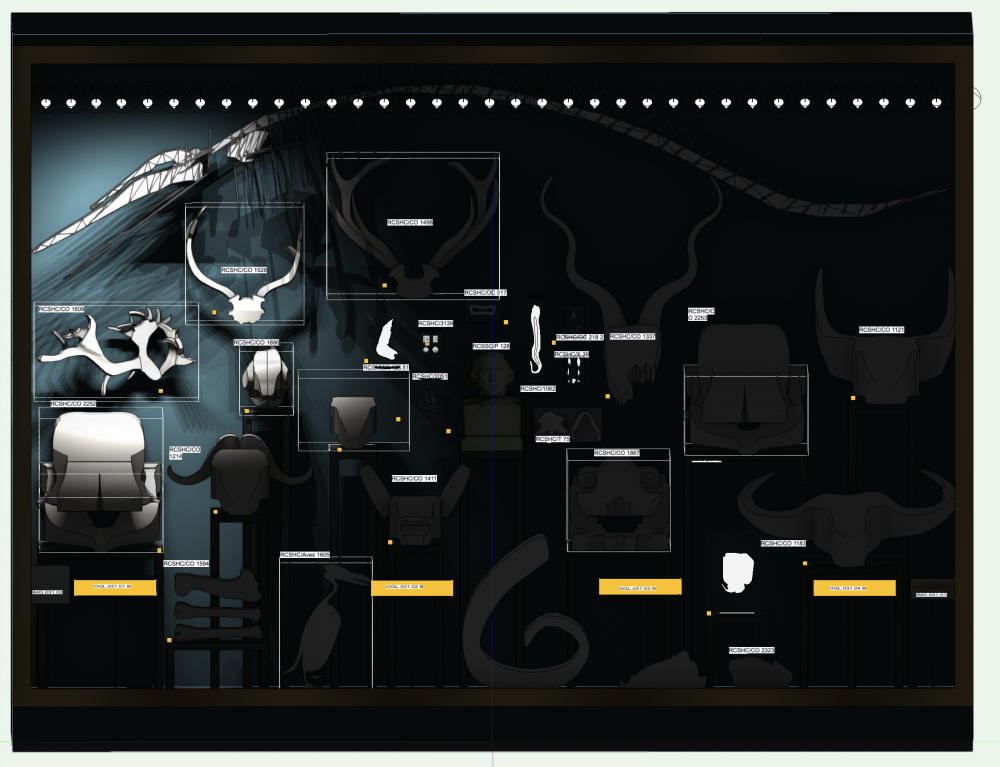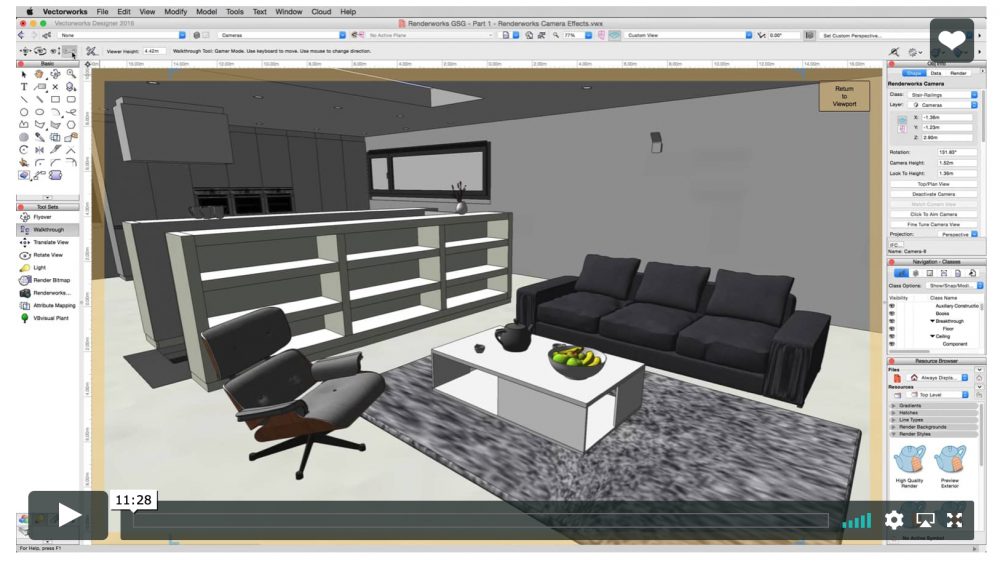
Jon Howard
Member-
Posts
31 -
Joined
-
Last visited
Reputation
4 NeutralPersonal Information
-
Location
London, UK
Recent Profile Visitors
The recent visitors block is disabled and is not being shown to other users.
-
Blank document preferences need to be changed to metric: how?
Jon Howard replied to Jon Howard's topic in General Discussion
Thank you everyone - I can't work out why it suddenly flipped to the feet and inches, when it used to be in metric before. I'll resave the default. Regards, Jonathan -
This is such a small issue, but the fact I cannot find a way of fixing it is really frustrating! My VW Spotlight default drawing is opening with units set to feet and inches, when I want it set to metric units. I cannot find how to change the default settings for 'Create blank document' anywhere, as I assume these are also the settings VW uses when starting up. I'd appreciate a pointer as to where I can change this as I cannot locate this in the online help. Jonathan
-
Excellent- thank you. I thought it must have been a limit, but could not find that in VW help. Am rendering it now. Jonathan
-
Is there a maximum number of light sources allowed in a model? I want to check shadowing in a display case, created by objects on shelves, from the display lighting at the top of the case. To do this, I have created 36 duplicate light sources in the top of the case model to mimic the individual LED heads at 110mm centres. They are simple light sources, set at 100% output with an 80 degree spread & 30 degree beam. No matter what I do, only the first 8-9 light sources will turn 'on' in the render - the others stubbornly refuse to show any light output even though they are identical & duplicated from the first fixture & have all of the same settings. I have tried rendering in variety of ways - the attached image is in OpenGL. I have made similar renders before in VW2020 of other display cases, but have never had this issue before. Is there something I am missing?
-
Thank you for the responses. I set the anti-aliasing & indirect lighting to very high, soft shadows & blurriness to high & environment lighting to medium for this render (everything else left the same). The results are so much better, thank you. The downside was the render time went from around 5 minutes to 120 minutes(!). I assume I'll need to find some settings in-between these two extremes to give me a faster render with acceptable results. Light test - linear & spots3.pdf
-
Hi, Thank you - previous settings for this was 'From render mode', so I changed the setting to 'Very high'. However, this has made very little difference to the appearance of the output.
-
One of the reasons for learning to use Renderworks properly is so that I can use my client's 3D designs to analyse my lighting positions. I tried to illustrate this in a recent discussion about a display case in a museum project that had a shelf; it was pretty obvious from a section that we'd have shadow issues under the shelf, but I thought it would be good to be able to demonstrate that with a quick render to the client team. I attach an output of my model here. The front lighting comes from two spots, arranged as per the light track positions in the room, and the spot settings of 10˚beam/20˚ spread to mimic the fixtures' performance. Under the overhanging elements of the case, I placed two linear fixtures that I made with the linear light tool - and set the output of the strips to 4000 lumens (an arbitrary value). The colour temperatures of the two types of fixture are deliberately different (3200K & 5600K)Light test - linear & spots.pdf so I can see where each light source is going. My query is why has the spot fixture got such a nice smooth beam performance, whereas the linear fixture is producing a lot of 'noise' & pixellation? The render was set to final quality, as I wasn't sure which value to adjust in the custom settings. Thank you for any pointers in improving this. Jonathan
-
Vectorworks University - rendering course completely obsolete?
Jon Howard replied to Jon Howard's topic in Rendering
Hi, Thank you for the thoughtful answer - and I read your post on the bugs in rendering; really useful. I am finding workarounds for the differences, like selecting the final quality in Renderworks from the View palette, for example. The key issue is whether I am doing it 'right' - I am a very long-term VW user (from MiniCAD days), and I know I have some really bad habits built up over the years when drawing in 2D, and I wanted to avoid that now I am trying to learn to render properly. I also agree the demo file is potentially 'buggy' - just trying to draw a camera in the 3D view, as described as the second step in the 'cameras' demo, causes my copy of Vectorworks to jump all over the place - the camera seems to suddenly leap to about 100m away from the building. I'll keep on with the courses & try to work out where the changes have been made; it's frustrating, as it just slows the process down, so it would be great if VW could update the content to match the latest versions of the software. Now I have started to render with lights, I have some further questions about that, but I'll post those separately. Thank you, Jonathan- 5 replies
-
- 1
-

-
- university
- rendering
-
(and 1 more)
Tagged with:
-
Is the Vectorworks University rendering course completely broken? The downloadable example file is in 2020 format, but the accompanying video appears to be referring to tools and operations that I find completely different in VW2020? For example, I have got as far as the rendering viewports example on a sheet layer. The tutor is asking me to select 'high quality render' in the 'resource browser' palette. Isn't the 'resource browser' now the 'resource manager', and if so, the 'high quality render' option is not one of the resources I can find. I note from the tutor's screen that he is using VW Designer 2016 - a software version that is now 4 years out of date. Isn't this module completely obsolete now? If it is, where can I find some up-to-date resources about this topic?
- 5 replies
-
- 2
-

-
- university
- rendering
-
(and 1 more)
Tagged with:
-
Referenced drawings in black & white only
Jon Howard replied to Jon Howard's topic in General Discussion
Hi, Thank you for this, but this does not solve the issue: if I select that setting, even my annotations are now in black & white I want to annotate the architect’s background in a colour, so that my annotations stand out., and the solution is to rather messily edit the previous classes, although this does not help when the viewport includes objects that are symbols (which they nearly always do). Jonathan- 10 replies
-
- viewports
- layer colour
-
(and 1 more)
Tagged with:
-
We have six VW seats in our office, and are all finding VW 2017 is becoming very unstable. I am having repeated crashes on my laptop (MacBook Pro running 10.12.3) & iMac (10.12.1). There seems to be no obvious function being used that causes the crash, just a sudden failure, and other users int he office are reporting similar sudden crashes. Also we are having extreme problems with the Object Info palette across all users: - Object Info palette disappears from the screen, even though it is still ticked in the Palettes menu. Unselecting & resecting it does not cause it to reappear. The solution is to quit the problem & restart, leading to several minutes of lost work time as the program restarts. - Object info palette minimises to just the top window bar & cannot be expanded again. There seems to be NO solution to this one. - Object info data disappears (boxes are empty of all object information) & the only way to solve this is to save the drawing, which causes the boxes to re-populate with the information. These repeated problems are making us very nervous about using VW with some of the larger BIM projects we are about to start work on. Is this instability something that is known about?
-
Thank you - that's pretty much how we're doing it. I am then sending them back the reduced file, with my information added, and they are copying my layer back into their mega-file.
-
Referenced drawings in black & white only
Jon Howard replied to Jon Howard's topic in General Discussion
Outstanding. That does the trick, perfectly. Thank you very much - fifteen minutes from posting the issue to having a solution.- 10 replies
-
- viewports
- layer colour
-
(and 1 more)
Tagged with:
-
Referenced drawings in black & white only
Jon Howard replied to Jon Howard's topic in General Discussion
Thank you for the quick reply. Yes, I imagine that would work, but then how could I go back to the appearance of the drawing? I may not need to, but it would be good to know that the information was still there, just switched off. I thought the whole point of referencing was to allow me to bring in drawings that may be updated later. If I have to manually edit the drawings before or after referencing, it's adding a lot to the workflow.- 10 replies
-
- viewports
- layer colour
-
(and 1 more)
Tagged with:
-
Is there a way to use a referenced drawing in black & white only? I want to bring in the architect's backgrounds into my drawings as a reference, then annotate viewports with my own information (position of light fixtures etc.). To make my own drawings clearer, I want to set the architectural drawings to black and white only, then annotate them with my information (position and shape of light fixtures & circuit references) in a colour, so that this information stands out on screen (but still gives me the option to print everything in black & white) However, if I set a viewport to black and white (in the Advanced settings), then all annotations are automatically black and white, too. If I go back to the referenced drawing, and set the document preferences to black & white, then this seems to affect the on-screen display of that file only, as when I then reference or update the drawing into my file, all of the class/layer colour information faithfully returns & I am back to where I started. This is maddening me; surely there must be a simple way to display the referenced drawing in black and white, without manually editing the architect's file to set all layers & classes to black and white & I am just missing it?
- 10 replies
-
- viewports
- layer colour
-
(and 1 more)
Tagged with:



